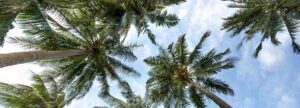A little insight into life in the desert
The Sahara desert begins in the southernmost part of Tunisia. The almost 250 mm of precipitation is often rained from the sky in just a single hour, with only a fraction actually touching the ground, as the largest part evaporates in the glowing air.
But when the spring rain sets in, you can see that the desert is alive.
Seeds that have survived long drought begin to germinate and a sea of flowers and plants brings the desert to life.
For people who live in the desert, one animal is vital - the dromedary.
Even today this riding and pack animal is regarded as a sign of respect and wealth and it enables people to lead a life in the Sahara. The camel's water storage is particularly impressive. Up to 120 l of water stored in the body tissue makes it possible for the camels to get by for up to 2 weeks without further water intake. It also provides milk, wool, leather and meat.
The main food in the desert used to be dates. They contain loads of sugar, protein, fat, carbohydrates and even vitamins A and C, so they are very nutritious.
Above all, the date palm is a necessary shade provider for the cultivation of other crops such as citrus fruits, pomegranates, almonds and pistachios. These in turn provide shade for the vegetables, cattle feed and tobacco growing close to the ground - the so-called three-storey economy.






